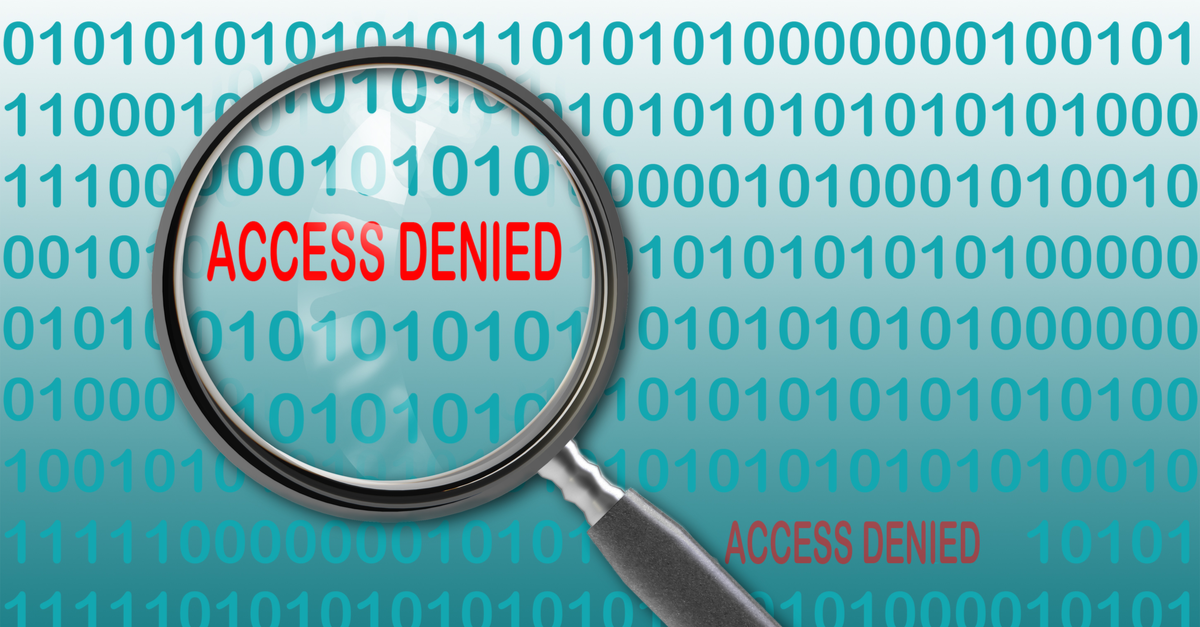What Is SAP ECC?
Ever feel like your business is a bit… disorganized? Like you’re juggling a million things and just waiting for one to drop? Well, that’s where SAP ECC comes in. Essentially, it’s a central nervous system for your business, a suite of software designed to integrate all your core processes. Think of it as the digital glue that holds everything together, from finance and human resources to manufacturing and supply chain. It’s a comprehensive system aimed at streamlining operations and improving decision-making. But more than just glue, SAP ECC provides the tools for data provisioning – pulling data from your various business areas into one accessible spot.
What does ECC stand for anyway?
It stands for Enterprise Central Component, which, honestly, is a bit of a mouthful. But the name does give you a clue as to what it does. SAP ECC is the core or “central” component of the SAP Business Suite. This is achieved via data provisioning adapters. These adapters give you access and allow interaction with your SAP ECC data and metadata. Think of it as giving you the keys to unlock all the useful information hidden within your business.
Imagine you’re running a bakery (because who doesn’t love thinking about pastries?). SAP ECC would help you track everything from ingredient inventory (how much flour you have left), to production schedules (how many croissants you need to bake), to sales and customer orders (that rush for sourdough on Saturday mornings). All this information is centralized, giving you a complete picture of your business in real-time. No more guessing, no more frantic phone calls, just data-driven decisions. Sounds good, right?
Why All the Buzz Around SAP?
SAP (Systems, Applications & Products in Data Processing) itself has been around for ages, and you’ve probably heard the name thrown around. But why is it such a big deal?
Well, let me tell you, SAP didn’t become a global leader by accident. What started with a small group of ex-IBM employees in Germany back in 1972, now dominates the ERP software market. SAP’s products are comprehensive, customizable, and, frankly, just really, really powerful. They allow companies – big and small – to manage their business processes with efficiency and insight.
And that’s the key – insight. It’s not just about automating tasks; it’s about providing the information you need to make smarter decisions.
Digging Deeper: The Modules That Make it Tick
Okay, so SAP ECC is a “suite,” but what does that actually mean? It’s broken down into modules, each handling a specific area of your business. Here are a few of the big players:
-
Financial Accounting (FI) & Controlling (CO) – FICO: This dynamic duo handles all things financial! We’re talking financial accounting, reporting, and cost planning. FICO enables organizations to manage and store every shred of their financial data and transaction history in one place, and then, to top it off, run financial analytics. It’s basically your financial command center.
-
Sales and Distribution (SD): Need to manage your sales processes? SD’s got you. This module manages major processes of sales and distribution, from selling products directly or through distribution networks to handling customer returns, billing, and credit issuance. It’s all about getting those products into the right hands, efficiently.
-
Materials Management (MM): Managing materials and services? MM steps up. This module manages procurement of materials and services from suppliers as well as related inventory processes, like counting inventory and reconciling it. It even manages goods issuance, receipts, and transfers of material.
-
Production Planning (PP): Now, planning production is no easy feat. This module helps businesses align demand with manufacturing capacity so they can more effectively plan product manufacturing, sales, and distribution. PP plays a vital role in a manufacturer’s supply chain and can be used for discrete, process, repetitive manufacturing, or a combo of multiple types.
-
Quality Management (QM): Ensuring top-notch quality across the board? Then here’s QM. It integrates with procurement, production, sales, and equipment maintenance processes. It has some super advanced features too, like complete internal or external audits. QM also assists in finding root causes of product failure to ensure ongoing quality improvements to a company’s business processes.
-
Plant Maintenance (PM): Keeping things running smoothly? PM to the rescue. This module monitors machines and functional locations, such as a chiller room or boiler room, to ensure proper working order. It provides alerts when issues are detected to prevent machine failures and production disruptions. The SAP PM component covers business processes such as preventive, corrective, and refurbishment maintenance. It’s the guardian of your operational uptime.
-
Customer Service (CS): Serving customers with excellence? CS swoops in. This module handles the business processes for providing maintenance services to customer equipment, and the option to bill customers for the maintenance services delivered. Happy customers are repeat customers, after all!
-
Project System (PS): Handling those large, complex projects? PS makes the chaos manageable. This module is meant to manage large, complex projects such as setting up a new manufacturing plant or monitoring a plant’s maintenance turnaround. Funneling all project-specific procurement or production through PS ensures that this module can allocate a project’s costs correctly while keeping them within the budget.
-
Human Capital Management (HCM): Managing your workforce effectively? HCM’s got your back. This module manages HR-related functions. This includes payroll, time management activities such as attendance and leave, career development, travel, and workplace safety. Because a happy, healthy, and well-managed workforce is a productive workforce.
Each of these modules can be used independently or integrated with others, depending on your specific needs. The flexibility is a huge selling point.
From SAP ECC to S/4HANA: The Evolution (Detailed Comparison)
Now, here’s where things get interesting. You might hear people talking about SAP ECC and then immediately hear the term S/4HANA thrown around. So, what’s the deal?
SAP ECC was the flagship ERP system for a long time, but SAP has since developed a newer, more advanced version called S/4HANA. But before we dig into S/4HANA, let’s clear up some terminology. SAP documentation officially changed from using the term module to using the term component when it moved from R/3 to SAP ECC, but many in the industry still use the term module. So both module and component usually refer to parts of the program.
To start, let’s define the difference between SAP ECC and SAP ERP. The term SAP ERP is SAP’s catchall for its various ERP products, including ECC, S/4HANA, Business One and Business ByDesign. Although SAP ERP is used as a catchall, SAP ECC is the set of core modules typically used in SAP ERP.
Next, let’s talk HANA. SAP HANA is an in-memory database for processing high volumes of data in real time. Meanwhile, SAP ECC is an ERP system and Business Suite’s core. ECC is an application suite that runs on a database, of which HANA is one example. When ECC is run on HANA it’s called Suite on HANA. The full name is SAP Business Suite powered by SAP HANA.
Think of SAP ECC as the trusty old car that’s been reliable for years. It gets you from point A to point B, but it’s not exactly cutting-edge. S/4HANA, on the other hand, is like the sleek, new electric vehicle. It’s faster, more efficient, and packed with the latest technology.
S/4HANA is built on SAP’s in-memory platform, HANA, which allows for real-time data processing and advanced analytics. This means you can get insights faster and make decisions more quickly. It also offers a more streamlined user experience and is designed to be more flexible and adaptable to changing business needs.
But the differences don’t stop there. Here’s a head-to-head comparison:
-
Database: SAP ECC can run on various databases, including Oracle, IBM DB2, and Microsoft SQL Server. S/4HANA, however, only runs on the HANA database. This is a key difference that allows S/4HANA to leverage the in-memory capabilities of HANA for faster processing and real-time analytics.
-
Deployment: S/4HANA offers more deployment options than SAP ECC. While ECC is primarily deployed on-premises, S/4HANA can be deployed on-premises, in the public cloud, in the private cloud, or in a hybrid environment. This gives businesses greater flexibility in choosing the deployment model that best suits their needs.
-
User Experience: S/4HANA uses the SAP Fiori user experience (UX), which is a modern, intuitive, and mobile-friendly interface. SAP ECC uses an older, standard GUI, which can feel dated and less user-friendly in comparison. Fiori is designed to be more accessible and easier to use, even for casual users.
-
Advanced Functions: S/4HANA incorporates more advanced technologies, like robotic process automation (RPA), machine learning (ML), and artificial intelligence (AI). These advanced capabilities aren’t available in SAP ECC. S/4HANA is designed to be a more intelligent and automated ERP system, helping businesses to improve efficiency, reduce costs, and make better decisions.
SAP is pushing companies to migrate to S/4HANA, and support for ECC is gradually being phased out. The transition includes assessment, a migration strategy, project preparation, system conversion, data migration, testing, system configuration, and go-live monitoring. SAP promises to support SAP ECC and other core Business Suite 7 applications until 2027, with optional extended maintenance until the end of 2030. Organizations still using ECC should begin planning a migration to S/4HANA or other ERP systems now! Unless an organization opts for the extended maintenance option, support updates and security patches for ECC will stop in 2027.
So, if you’re still running on ECC, it’s definitely time to start thinking about your migration strategy.
Why Should You Care About Any of This?
Okay, so all this tech talk can be a bit overwhelming, I get it. But here’s why you should care about SAP ECC (or, more likely, its successor S/4HANA):
-
Increased Efficiency: Streamlining your business processes leads to increased efficiency and reduced costs. You will also track financial performance, track sales volumes, and oversee the distribution of products with the efficient software suite.
-
Improved Decision-Making: Real-time data and advanced analytics empower you to make smarter decisions.
-
Better Customer Service: Integrated processes and improved visibility allow you to provide better customer service.
-
Enhanced Collaboration: SAP ECC facilitates collaboration across departments and locations.
-
Greater Agility: The system’s flexibility allows you to adapt to changing business needs quickly.
-
Competitive Advantage: In today’s fast-paced business environment, having a robust ERP system like SAP ECC can give you a significant competitive advantage.
Basically, it’s about running your business better, faster, and smarter. And who doesn’t want that? Plus, SAP 4/HANA is updated every two years, so this system is constantly improving!
Is SAP ECC Right for Your Business?
That’s the million-dollar question, isn’t it?
The truth is, SAP ECC (and S/4HANA) isn’t a one-size-fits-all solution. It’s a powerful tool, but it’s also complex and can be expensive to implement.
Here are a few things to consider:
-
Size of Your Business: SAP ECC is generally better suited for mid-sized to large enterprises. Smaller businesses may find it too complex and expensive.
-
Complexity of Your Processes: If your business processes are relatively simple, you may not need all the bells and whistles of SAP ECC.
-
Industry: Certain industries, such as manufacturing and finance, tend to benefit more from SAP ECC than others.
-
Budget: Implementing and maintaining SAP ECC can be a significant investment. Make sure you have the budget and resources to support it.
-
Future Growth: If you’re planning to expand your business, SAP ECC can provide the scalability you need to support that growth.
If you’re a small startup just selling handmade jewelry on Etsy, SAP ECC is probably overkill. But if you’re a multinational corporation with complex supply chains and global operations, it could be exactly what you need.
The Challenges of SAP ECC (Let’s Be Real)
Alright, let’s keep it 100. Implementing and running SAP ECC isn’t always a walk in the park. There are challenges, and it’s important to be aware of them:
-
Complexity: SAP ECC is a complex system, and it takes time and effort to learn how to use it effectively. There’s a steep learning curve, no doubt about it.
-
Cost: As mentioned earlier, SAP ECC can be expensive to implement and maintain. You need to factor in the cost of software licenses, hardware, implementation services, and ongoing support.
-
Implementation Time: Implementing SAP ECC can take months or even years, depending on the scope of the project. It’s not something you can just flip a switch and have it working overnight.
-
Change Management: Implementing SAP ECC often requires significant changes to your business processes. This can be challenging for employees who are used to doing things a certain way.
-
Integration: Integrating SAP ECC with other systems can be complex and require specialized expertise.
But don’t let these challenges scare you off. With careful planning, proper training, and the right implementation partner, you can overcome these obstacles and reap the benefits of SAP ECC.
Tips for a Successful SAP ECC Implementation
So, you’ve decided that SAP ECC is right for your business. Congratulations! But now comes the hard part: implementation. Here are a few tips to help you succeed:
-
Start with a Clear Vision: Define your goals and objectives for the implementation. What do you want to achieve with SAP ECC? What problems are you trying to solve?
-
Assemble a Strong Team: Put together a team of experienced professionals who have the knowledge and skills to guide the implementation. This should include both internal employees and external consultants.
-
Develop a Detailed Plan: Create a comprehensive implementation plan that outlines the scope of the project, timelines, resources, and responsibilities.
-
Prioritize Data Migration: Data is the lifeblood of your business. Make sure you have a plan for migrating your existing data to SAP ECC accurately and efficiently.
-
Provide Thorough Training: Train your employees on how to use the system effectively. This will help them adapt to the new processes and maximize the benefits of SAP ECC.
-
Test, Test, Test: Before going live, thoroughly test the system to identify and fix any issues.
-
Don’t Forget Change Management: Communicate with your employees throughout the implementation process and address their concerns. Help them understand the benefits of the new system and how it will make their jobs easier.
-
Monitor and Optimize: Once you’re live, continuously monitor the system’s performance and identify areas for improvement.
The Future of SAP and ERP Systems
The world of ERP is constantly evolving. Cloud computing, artificial intelligence, and the Internet of Things are all having a major impact on how businesses manage their operations. SAP is investing heavily in these technologies to deliver even more value to its customers.
Expect to see more and more SAP solutions move to the cloud, offering greater flexibility, scalability, and cost savings. AI will play an increasingly important role in automating tasks, improving decision-making, and personalizing the user experience. And the IoT will enable businesses to connect their physical assets to their ERP systems, providing real-time visibility into their operations. Due to SAP ending support for ECC, every company currently using SAP ECC will eventually have to move to S/4HANA or another ERP system.
Final Thoughts
SAP ECC has been a cornerstone of enterprise resource planning for years, but the future is clearly heading towards S/4HANA and cloud-based solutions. Understanding the fundamentals of SAP ECC is still valuable, as it provides a solid foundation for navigating the ever-changing landscape of ERP. Whether you’re a seasoned SAP professional or just starting out, it’s an exciting time to be involved in this field. Keep learning, keep exploring, and keep pushing the boundaries of what’s possible.
And remember that bakery example? All those processes? Well, they all need to be secured, right? And that’s where Pathlock comes in.
Securing Your SAP Environment with Appsian
As you embrace the power of SAP, you’ll also want to make sure you’re protecting it from risks. Appsian offers a comprehensive Cloud Software platform that helps you manage access governance and cybersecurity across your SAP and other business-critical applications. It’s designed to simplify audit and compliance, prevent data breaches, and reduce the risk of fraud. Appsian integrates seamlessly with your existing SAP environment, providing real-time visibility and control over user access, segregation of duties, and sensitive data.
Ready to see how Appsian can help you secure your SAP environment? Get a demo today! It’s a smart move towards a more secure and efficient future.














